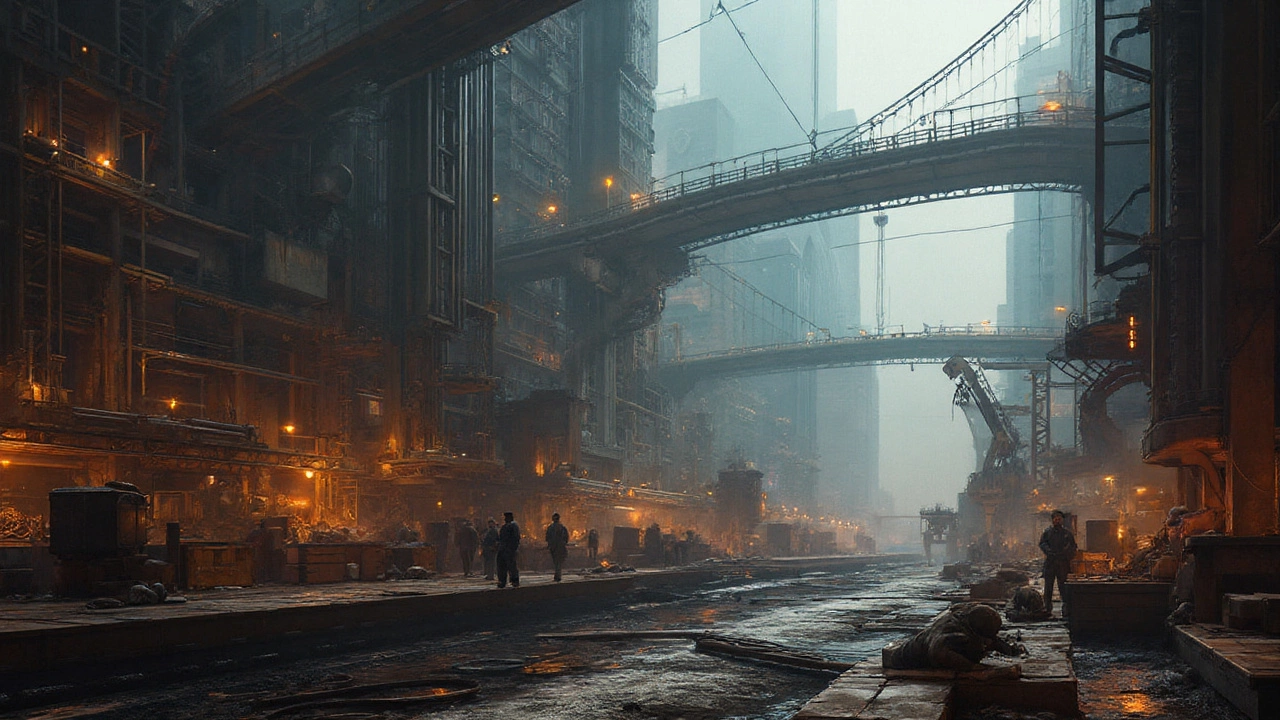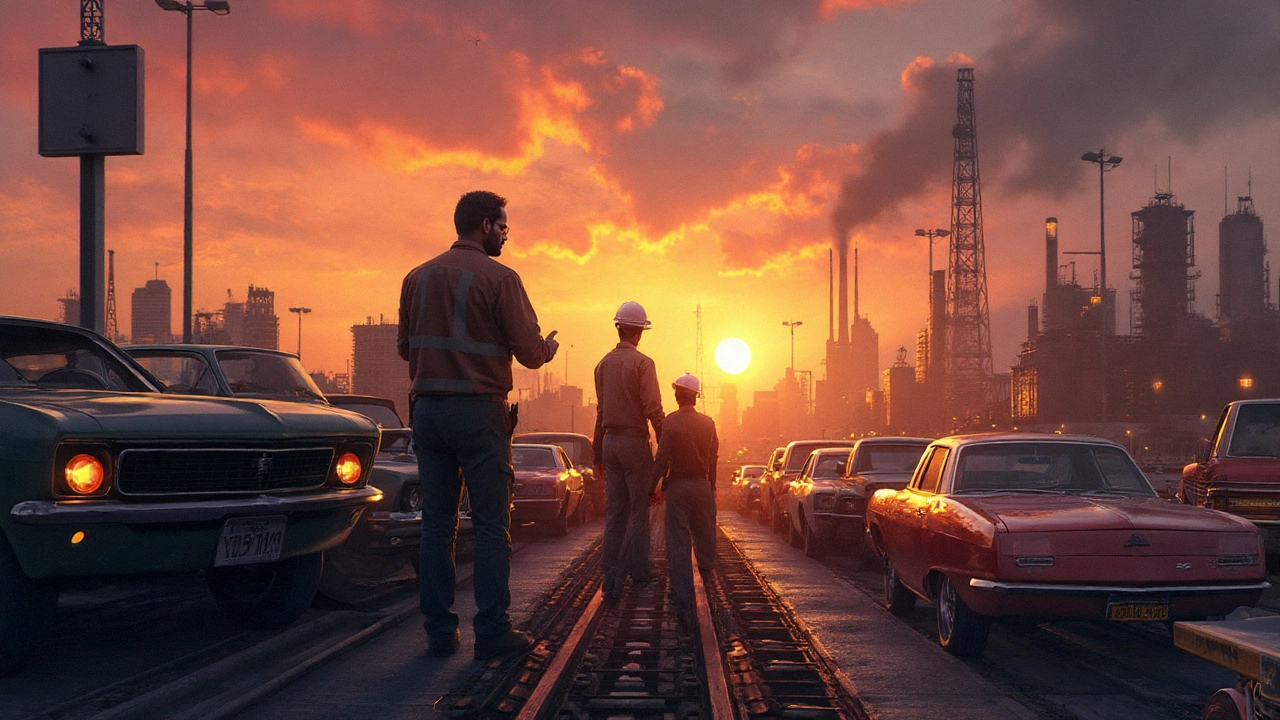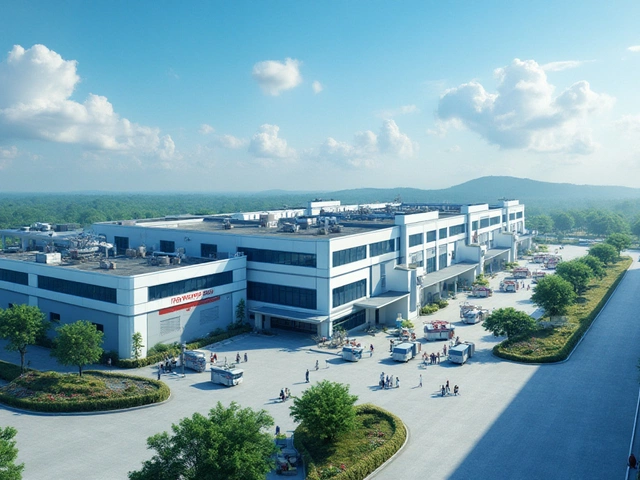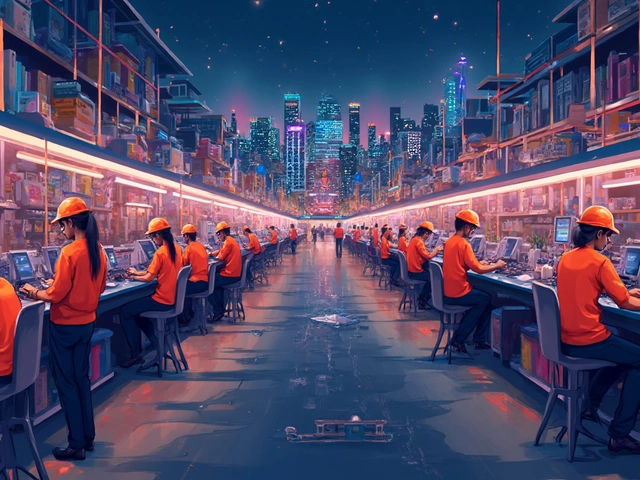Here's a wild question for your next pub quiz: which city holds the crown as the true manufacturing capital of America? Is it the famous Motown—Detroit—or perhaps the Windy City, Chicago? Some folks even throw spots like Houston and Los Angeles into the mix. But there’s far more to picking a manufacturing capital than counting car factories or looking at old history books. New trends, shifting economies, and modern tech have all left their mark, shaking up what we once thought we knew about American industry. Get ready for some surprising answers, quirky facts, and practical info you can use—deal?
Detroit: The Car Capital With Grit That Won't Quit
Say “manufacturing” and most people picture Detroit’s Ford, General Motors, and Chrysler plants booming at full tilt. Detroit and cars go together like peanut butter and jelly—everyone knows that story. The thing is, the Motor City still wears its car heritage like a badge of honor. At its peak in the 1950s, more than two million people called Detroit home, and one in every six jobs nationally was linked to the auto industry. That's serious domination. Even today, over 75% of America’s auto assembly takes place in Michigan, mostly centered around Detroit and its nearby suburbs.
Beyond just cars, Detroit still churns out heavy machinery, metal parts, aerospace systems, and a surprising amount of tech gear. Companies like Lear, Magna, and American Axle have added high-tech flair to the traditional automobile lineup. After the city’s bankruptcy in 2013, you'd think the place would lose its industrial mojo. But Detroit bounced back, becoming a magnet for startups with a blue-collar edge—robotics shops and battery assembly operations for electric vehicles (EVs) are popping up across town. As recently as 2024, Ford’s new Rouge Electric Vehicle Center alone pumped a billion dollars of new investment into Detroit’s inner suburbs.
The scale of Detroit’s manufacturing muscle doesn't just come from cars. Thousands of small, specialized supply companies build everything from engine molds to car seats tucked away in unassuming industrial parks. These suppliers feed not just the Big Three automakers but also aerospace, defense, and tech clients. Even with its ups and downs, Detroit’s industrial heartbeat is so loud you can feel it in your bones when you drive by the old Packard Plant ruins, a stone’s throw from gleaming new battery gigafactories.
Chicago: The Factory Floor That Never Sleeps
If Detroit is the classic engine room, Chicago’s the sprawling warehouse that never seems to sleep. Chicago's edge? Location, location, location. Sitting smack dab in the middle of the country, on Lake Michigan and with easy connections to every major rail line, it’s been the country’s go-to transport and distribution hub since the late 1800s.
In numbers, Chicago’s industrial sector packs a heavy punch. With over 10,000 factories employing nearly 300,000 workers, it leads with muscle across a bunch of cool fields: food processing (think Oreos and Vienna Beef), metalwork, machinery, chemicals, electronics, and even pharmaceuticals. The city’s manufacturing base is incredibly diverse. In fact, Chicago made more than $107 billion in manufactured goods just last year, outpacing most competitors and gaining fast on the coasts.
A visit to the Kinzie Industrial Corridor or the historic Pullman district gives you an instant hit of what drives the city—metal stamping workshops humming alongside robotics labs and artisan chocolate factories. Even as jobs moved overseas post-1980s, Chicago kept reinventing itself. These days, small-batch food producers, print shops, and tech-driven light manufacturing outfits call Chicago’s gritty warehouses home. It’s no wonder that the city averages one manufacturing job for every 12 residents—way higher than the national average.
Here’s a quick comparison of Detroit and Chicago’s manufacturing strengths:
| City | Major Industries | 2024 Factory Jobs | Annual Output ($B) |
|---|---|---|---|
| Detroit | Automotive, Machinery, Tech | 411,500 | 70 |
| Chicago | Food, Metals, Chemicals, Electronics | 298,000 | 107 |
If you’re curious about sheer versatility, Chicago’s got Detroit beat. But for size and classic muscle? Detroit still roars.

Honorable Mentions: New Stars and Old Titans
But hold up—America’s manufacturing future isn’t all about these old titans. There are a few surprise players sneaking into the ring. Houston and Dallas cranked up their industrial output in recent years, thanks to the energy sector and aerospace. Southern cities like Nashville and Charlotte have also boosted their share through car assembly and machinery work, while Los Angeles has become a leader in aerospace, computers, and high-end electronics. Don’t forget Greenville, South Carolina, where BMW and Michelin plants are so huge they feel like cities unto themselves. Experts say in 2024, the South had the fastest-growing share of new factory jobs, outpacing the Midwest for the first time since the Great Depression.
Automation and robotics are the wild cards here—advanced factories need skilled workers far more than armies of unskilled labor. Cities with tech schools, good transport, cheap land, and eager talent are jumping into the fight for America’s factory crown. To put it simply: we’re watching a heavyweight bout and the title could change hands any time. In fact, Texas alone produced $238 billion in manufactured goods in 2024, the most of any state, with Houston accounting for about 40% of that. Not bad for a city better known for oil and space launches.
Factors That Decide America’s Manufacturing Capital
So how do you actually pick the “manufacturing capital” of America? Is it about the volume of stuff made, total number of workers, the range of industries, or just brand recognition? You’ve got to weigh a few different things.
- Output: Cities are ranked by total factory output—the more they ship out, the higher they score.
- Workforce: Some capitals win on pure numbers, with hundreds of thousands of workers often spread across dozens of fields.
- Diversity: Cities like Chicago stand out for how many types of goods and industries they cover—from snacks to steel beams.
- Innovation: It’s not only about making car axles and canned soup anymore; it’s now how much you adapt to new tech—robotics, digital twins, AI-driven assembly lines. Detroit and Houston both made huge bets on this.
- Location: If you’re close to a port, rail hub, and interstate, you win. Chicago literally sits on the crossroads of America, making it easier to move goods nationwide.
Talking to people in the business, they’ll tell you there’s no one-size-fits-all answer. When I asked my mate Karan, a supply chain manager who’s worked in everything from steel mills in Indiana to chip fabs in Arizona, he said he still thinks of Detroit first, “but you can’t ignore Chicago if you want reach and logistics.”

Tips and Insights for Businesses and Visitors
Thinking about setting up shop, looking for a job, or just planning a warehouse tour for your kid’s next school project? There’s a bunch you can learn from these industrial heavyweights.
- If you’re an entrepreneur, Chicago’s food and packaging clusters offer huge opportunities. There are specialized startup incubators for food tech (Tastech Hub, The Hatchery) and for industrial robotics (MxD, the Digital Manufacturing Institute).
- Detroit remains unbeatable for anyone interested in automotive supply chains, battery tech, or new EV development. The city is home to dozens of supplier workshops, technical schools, and showpiece plants like Ford’s new gigafactory tours.
- If you’re looking to break into the industry, apprenticeship programs in both cities make it surprisingly easy to learn on the job—think paid internships, union-led apprenticeships, and city-sponsored manufacturing boot camps, even for older workers.
- Families and history buffs will love guided factory tours—Detroit has the Henry Ford Museum; Chicago has the Museum of Science and Industry and the amazing Bubbly Dynamics makerspace.
- Property is much cheaper in up-and-coming manufacturing hubs like Greenville and Charlotte. Businesses on a budget have been flocking South for lower costs, friendlier regulations, and incentives ranging from tax credits to energy grants.
The future? It’s anyone’s guess! But if you’re after that legendary industrial vibe and want to see machines, sweat, and tech meld into one wild show, Detroit and Chicago still lead the charge. Who knows—maybe your next car, Oreo, mobile chip, or spaceship component started its journey right in the heart of America’s industrial capitals.








